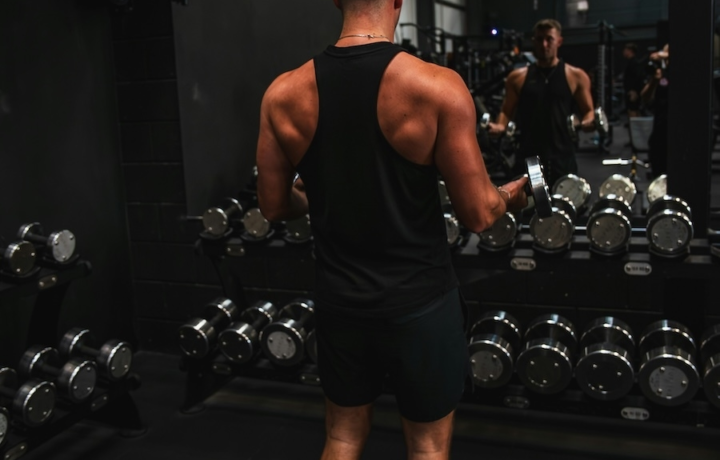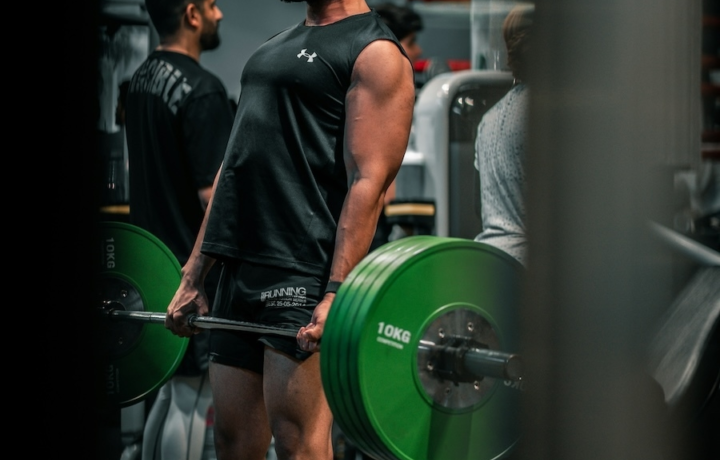Exercise
Dumbbell Incline Biceps Curl

Dumbbell Incline Biceps Curl
How to Perform
- Adjust an incline bench to approximately 45 degrees and sit with your back firmly against the padding, feet flat on the floor.
- Grasp a dumbbell in each hand with a supinated (palms-up) grip, allowing your arms to hang fully extended on either side of the bench.
- Keep your upper arms stationary and close to your torso as you exhale and curl the weights upward by flexing at the elbows.
- Continue the curl until the dumbbells reach shoulder level and your biceps are fully contracted, maintaining a neutral wrist position throughout.
- Hold the contracted position for a brief moment, focusing on the peak contraction in your biceps.
- Inhale as you slowly lower the dumbbells back to the starting position with controlled movement, resisting gravity.
- Maintain a stable torso position throughout the exercise, avoiding the tendency to rock or use momentum to lift the weights.
- Keep your shoulders pulled back and down throughout the movement to isolate the biceps and prevent front deltoid engagement.
Important information
- Keep your elbows fixed against your sides throughout the movement to maximize biceps activation and prevent shoulder involvement.
- Adjust the bench angle to target different portions of the biceps—a steeper incline emphasizes the long head while a flatter angle targets the short head.
- Choose a weight that allows you to maintain proper form; if you're swinging the weights up, they're too heavy.
- Focus on a full range of motion rather than the weight itself, allowing your arms to fully extend at the bottom without locking out your elbows.

Dumbbell Incline Biceps Curl
Exercise Details
Primary Muscles
Muscle Groups
Mechanic
Risk Areas
Built for progress
Take the guesswork out of training
Create personalized AI-powered workout plans that evolve with you. Train smarter, track every rep and keep moving forward, one workout at a time.






The Dumbbell Incline Biceps Curl stands as a premier movement for isolating and developing the biceps brachii muscle. This variation, performed on an incline bench, creates a unique angle that places the biceps under tension in a stretched position, stimulating growth in ways that standard curls cannot achieve. The exercise targets the long head of the biceps particularly effectively, contributing to that coveted peak when the arm is viewed from the side.
While not overly complex, the Dumbbell Incline Biceps Curl requires proper form and body awareness to execute correctly. Intermediate lifters will appreciate the subtleties of this movement as it demands stability, controlled movement patterns, and mind-muscle connection. Beginners should master standard biceps curls before progressing to this variation, while advanced lifters can manipulate tempo and resistance to continue challenging their muscles.
This exercise primarily engages the biceps brachii, with particular emphasis on the long head due to the arm position created by the incline bench. The brachialis and brachioradialis muscles also receive significant stimulation, contributing to overall arm development and elbow flexion strength. The incline position creates a unique stretch at the bottom of the movement that cannot be replicated with standing curls.
For physique athletes, the Dumbbell Incline Biceps Curl offers exceptional value for creating balanced, aesthetically pleasing arms. The exercise helps develop the full length of the biceps muscle, contributing to that rounded, full look that's prized on stage. When incorporated into a well-designed hypertrophy program, this movement can address underdeveloped areas and create more impressive arm proportions.
Beyond aesthetic benefits, this exercise builds functional pulling strength that transfers to various sports and everyday activities. The improved biceps strength contributes to better performance in compound movements like rows and pull-ups, where arm flexion plays a supporting role. Regular incorporation of incline curls helps develop resilient elbow flexors while building the neuromuscular connections needed for greater overall upper body strength.
FAQ - Dumbbell Incline Biceps Curl
The dumbbell incline biceps curl primarily targets the biceps brachii, with special emphasis on the long head due to the stretched position created by the incline bench. It also engages the brachialis and brachioradialis muscles as secondary movers, contributing to comprehensive arm development.
Sit on an incline bench set to 45-60 degrees with arms hanging straight down, palms facing forward. Curl the weights up while keeping your upper arms stationary, focusing on a full contraction at the top. Lower the weights with control, allowing your arms to fully extend for a complete stretch.
To make it easier, use lighter weights or decrease the bench angle to reduce the stretch on your biceps. To increase difficulty, use heavier dumbbells, slow down the negative (lowering) portion to 3-4 seconds, or increase the bench angle for a greater stretch at the bottom position.
Avoid bending your elbows to compensate for limited shoulder mobility, as this negates the stretching benefits. Don't rush through repetitions or use momentum—move slowly and deliberately. Also, never force the movement beyond the point of mild discomfort, as this could lead to shoulder strain.
Include incline biceps curls 1-2 times weekly as part of your arm or pull training days. For optimal growth, perform 3-4 sets of 8-12 repetitions, ensuring at least 48 hours of recovery between sessions targeting the same muscle group.







